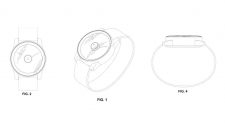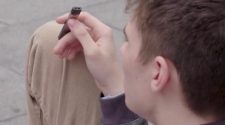Healthy habits, such as eating well, exercising regularly, getting restful sleep, hydrating adequately, practicing stress management skills, staying on top of health screenings, taking time to recharge and avoiding harmful substances are all a part of an important framework that is vital to you.
Large or small, the impact of healthy behaviors is far-reaching, regardless of your age, sex or physical ability. Healthy habits not only improve your overall well-being while making you feel good, but they actually combat illnesses such as heart disease, stroke, anxiety, depression, certain cancers and high blood pressure. Conversely, bad habits interrupt your life and prevent you from accomplishing your healthiest selves. They can jeopardize your health — mentally, emotionally and physically.
So while developing good habits can be challenging as they require changing mindsets — the great news is you can make choices to build healthy, positive habits into your life. No matter how old you are or how bad your habits have been, you can systematically introduce small changes into what you do daily, that will have a far-reaching, positive impact on your health and well-being.
Your habits are learned actions that you’ve developed and are automatically triggered when you encounter a situation in which you have repeatedly done those actions. It is a regular tendency or practice you have and can be broken down as a cue, routine and reward. Habits become subconscious activity and can be either good or bad for you.
A simple example is when you get in bed, you rub your eyes, and it feels good. The cue is your bed, the routine is rubbing your eyes, and the reward is the feeling of rubbing it. Or, it can mean when you get home you see your couch, you watch television to unwind, and it feels good. Here’s where the green, yellow or red flag is raised as each time you perform the routine, the link strengthens, and a habit is formed.
Habits are mentally efficient; they are automatic, frequent behaviors that allow your brain to conserve its resources. You don’t feel the need to monitor or control them and, thus, can focus your attention on more difficult or challenging tasks. Thus, habits are energy-efficient because they are reflexive or done on auto-pilot, not relying on conscious thought, memory or willpower.
Scientists are learning more about the chemicals in our bodies that drive habits. We now know that when people see something associated with a past reward, their brain releases dopamine, a feel-good hormone. This happens even when they just see the same thing and aren’t paying attention to it or expecting a reward.
In other words, your experiences bias your attention to certain things, unconsciously. Take for example, sugary foods. When you eat a cookie or cake, the sugar in them causes the pleasure centers in your brain to go into overdrive and create a euphoric-like feeling. The next time you see cookies or cake, or even if it is just a glance, your attention unconsciously gets drawn to it, because this past reward association causes (pleasure) dopamine release.
In short, whether good or bad, your “routines” are key because habitualness creates a nurturing aspect within you. This, in turn, can also allow you to be jerked around impulsively and lead to a breeding ground for everything you essentially do not want — eating too much sugar, spending too much time in front of screens, sabotaging good sleep hygiene, becoming entangled in projects in overdrive, focusing on worries, foregoing exercise and the list goes on.
How long to form or break a habit?
It depends on the habit, the person, the commitment to change, the actions taken to change it and the environment you are in. Interestingly, experts say the range is wide, starting at 18-plus days, with an average of about two months to form or break a habit.
Breaking bad habits, making new good habits
There is not a one-size-fits-all solution to building good or breaking bad habits. Some are mild or moderate behaviors while others are strong and addictive (like biting nails or smoking). And, yes, bad habits can be hard to break, because they are deeply wired by constant repetition into your brain and, too, pleasure.
Key understandings and action steps include:
• Recognize and clearly define the behavior you want to change or develop. Habits are patterns of behavior, and it is the breaking of certain patterns that is the key to breaking bad habits. Think about your habit-breaking process in terms of specific, doable, positive behaviors.
• Identify your triggers. Are they sensory-related, social, situational, emotional events or activities — or a combination of each? By identifying your triggers, you have a way of doing something to push back and not have that auto-pilot kick in. Get rid of temptation, reframe cues or remove objects, places and people that trigger a bad habit. Thinking through steps to remove temptations within your control is very effective (and, too, are part of your “support system”). For example, unhealthy snacking and eating at your home. When grocery shopping, avoid those aisles that are stockpiled with junk foods and make a grocery list to which you strictly adhere. If you love indulging in cookies as a midnight snack, but don’t have them, you probably won’t drive to the store to get them (plus, it may be closed). And, too, place healthy snack items such as fruit on your kitchen counters so they are in plain sight.
• Piggy-backing is the term for adding a new, good-for-you habit onto something that you already do, which becomes the cue. For example, flossing. We know that this simple habit that takes less than a minute in most cases can decrease your risk of dental decay and gum disease, particularly when combined with brushing twice a day. Thus, you can piggyback flossing onto brushing your teeth. You are already in the bathroom for it, and that can become the cue for a healthy, new routine.
• Replace a bad habit with a good or neutral one. This provides you with the same reward or pleasure after doing it — remember, it is cue, routine, and reward — and is a great way to help do away with those bad habits. After a long tough day at work or school, you may want to jump onto the couch and watch television or go onto social media or surf the web to decompress. How about putting on your sneakers and going for a walk, jog or run to help decompress? Or another physical activity that can achieve the same goal but has a number of physical and mental health benefits?
• Put a pen to paper and write down your triggers, substitutes and action plan. Research supports that writing things down will help you remember, understand and learn. In a way, it makes the promise more real, almost like entering into a contract with yourself.
• Build a support system — talk to a friend and share with family, groups dedicated to positive change or qualified professionals. Building support also includes your environment and home. Your physical and head spaces need to support your new good habit or help you break your old one.
• Anticipate tempting scenarios and cravings, and create a game plan. The routine is rewarding, and in some cases euphoric. This is particularly problematic when we are feeling bored, stressed or anxious. Engaging in a bad habit almost serves as self-medication to overcome the uncomfortable feelings. While breaking a habit, you will likely be tempted, so be prepared. Devise a specific plan or good or neutral habit, such as deep breathing, a fidget spinner, saying a prayer, listening to music, jumping jacks, a brief walk or some other activity or substitute to suppress engaging in the routine or succumbing to the craving.
• Support and reward yourself — keep your eyes on the prize! Make sure you know your payoff and deliberately pat yourself on the back for each step you take even though you know there is still a distance to go.
• Be mindful, persistent and patient by knowing that you can do it. Realize it will take time for the old, bad-habit brain firings to calm down and be replaced by new brain patterns. Don’t get frustrated for slip-ups or use them as rationales for quitting. Take it one day at a time and remain mindful of your goal.
I recently read a particularly great note about habits: “While all habits are not created equal, the overarching goal is the same, namely, you taking more charge of your life, being proactive rather than reactive, deliberate rather than routinized.” You’ve got this!!
Dr. Nina Radcliff, of Galloway Township, is a physician anesthesiologist, television medical contributor and textbook author. Email questions for Dr. Nina to [email protected] with “Dr. Nina” in the subject line. This article is for general information only and should not be used for the diagnosis or treatment of medical conditions and cannot substitute for the advice from your medical professional.















